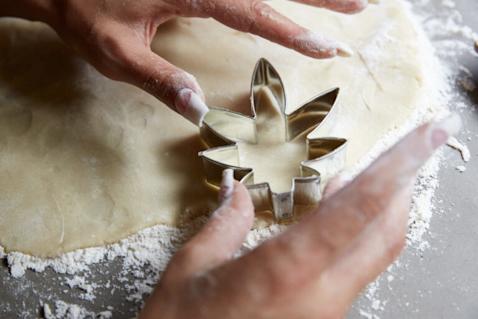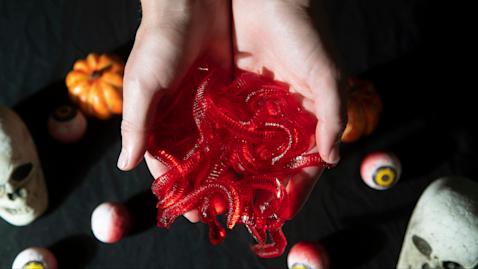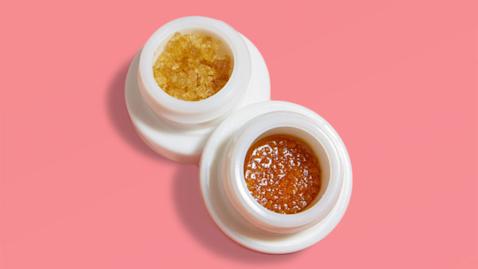THC Cooking Oil
Categories
Cannabis brands in Columbus
Cannabis brands in Columbus
Explore Cooking
Explore Cooking
Not seeing the products you expected? Check if your location is set correctly.
96 products


Learn about cannabis cooking oils
Learn about cannabis cooking oils
What are cannabis cooking ingredients?
Cannabis cooking ingredients are cooking products, like oils, butter, and condiments, that are infused with cannabis.
Cannabis cooking products are popular for their versatility, convenience, and creative culinary applications. Infusing dishes and even entire meals is becoming more common among cannabis consumers and anyone looking to elevate their culinary experiences.
Types of cannabis cooking ingredients
While there are countless cannabis edibles available on the market, cannabis cooking ingredients allow consumers to create their own edibles so they can personalize and customize any dish they want.
Some of the most common cannabis cooking ingredients available include:
Oils
Butter
Ghee
Honey
Maple syrup
Condiments
You can find many more cannabis cooking ingredients at dispensaries near you on Weedmaps.
How cannabis cooking ingredients are made
While each type of cannabis cooking ingredient is made slightly differently, they’re all made with refined cannabis concentrates, like distillate or isolate.
Once the cannabis concentrate is made and decarboxylated to convert the THCA into THC, it’s infused into the base ingredients of the product. Infusion often happens during or after the cooking ingredient is made, using emulsifiers or homogenizers to ensure even distribution and precise dosing.
Once cannabis cooking ingredients are made, they’re lab-tested, then packaged in child-resistant containers before being distributed to dispensaries.
How to shop for cannabis cooking ingredients
Understanding labels
It’s important for consumers to read labels on cannabis cooking ingredients to ensure they’re using the product properly and don’t over-dose or under-dose the edible or dish they’re incorporating it into.
Most cannabis cooking product packages will be labeled with some or all of the following:
Cannabinoid content, including THC (tetrahydrocannabinol) and/or CBD (cannabidiol)
Ingredients
Manufacturer info
Nutrition facts
Cannabis warning statements
Universal cannabis symbol
Batch number and lab testing info
Serving size and dosing instructions
Choosing the right cannabis cooking ingredients
Choosing the right cannabis cooking products comes down to what types of foods a consumer will be preparing and how they would like to incorporate them into the dish.
For instance, if a consumer plans to bake cookies, pie, or other pastries, cannabutter or cannabis-infused ghee would be a good choice. If they plan to roast a chicken with sautéed vegetables, infused olive oil might be the right ingredient. If they’re making pancakes or an acai bowl, try infused maple syrup or honey. For dessert, garnish the plate with shaved chocolate from a cannabis chocolate bar.
Of course, consumers can always use cannabis cooking ingredients in their pure form — try cannabutter on top of toast with jam, infused extra virgin olive oil drizzled over pasta, or a spoonful of cannabis honey in a cup of hot tea.
How to use cannabis cooking ingredients
Directions and dosing
No matter what kind of cannabis cooking ingredient or product a consumer buys, the product’s package labels will usually include the total amount of THC and/or CBD in milligrams the product contains and how many milligrams of THC and/or CBD each serving contains.
For example, if a user buys a 4-ounce bottle of cannabis-infused extra virgin olive oil that contains 24 1-teaspoon servings and 240 milligrams of THC (total), the label should say:
24 servings
240 mg THC
Serving size: 1 teaspoon
10 mg THC per serving
Frequently asked questions
The difference between cannabis butter and oil is similar to the difference between regular butter and oil (not infused with cannabis).
Cannabis butter is butter infused with cannabis, while cannabis oil is cooking oil, like extra virgin olive oil or coconut oil, infused with cannabis. Both products can be used in cooking, similar to the way one would use non-infused butter and oils in cooking.
How high a consumer gets and how long the high lasts depend on various factors, including the individual, product, dosage, strain (indica, sativa, or hybrid), and consumption method.
While cannabis cooking ingredients alone can take anywhere from 30 minutes to a couple of hours to kick in, food made with cannabis cooking ingredients can take a little longer because digestion generally takes longer.
The length of time the effects last can vary as well, but generally last between 4 and 8 hours.
No. While making cannabutter and other infused ingredients at home requires decarbing, the primary benefit of purchasing cannabis cooking ingredients from a dispensary is that they have already infused the products and have labeled the THC content for accurate dosing.
Yes. In regions where cannabis is legal, consumers can find cannabutter, infused ghee, and other cannabis cooking ingredients at dispensaries.
To calculate dosing, consumers should read the label on the product they’re using — it will tell the serving size. Consumers should keep in mind that if they’re using a cannabis cooking ingredient in multiple courses or foods in one meal, they may want to use lower doses or spread a single serving out across the entire meal.
Yes, users can bake with cannabis cooking ingredients. Cannabis-infused butter and oils work well in most baked goods, including cookies, muffins, cakes, breads, pies, brownies, casseroles, and more. They should just make sure to read the label and directions on a cannabis cooking ingredient before proceeding to make sure they dose and use the product correctly.
It depends on the product. Like food and drink products, cannabis edibles, including cannabis cooking ingredients, will be labeled with an expiration date.
Cannabis cooking ingredients like infused butter, oils, and condiments should be stored carefully to preserve potency, freshness, and safety. Consumers can read the labels on cannabis cooking ingredients to know how to store them, but here’s a general guide for common cannabis cooking products:
Most infused butters should be stored in the refrigerator.
Infused oils, honey, and maple syrup should be placed in a cool, dark, dry place, like the pantry or a cabinet.
Infused condiments, like cannabis hot sauce and cannabis ketchup, should be refrigerated after opening, while other condiments don’t require refrigeration.
Keep all cannabis cooking ingredients in their original, child-proof containers out of reach of children and pets.
It might, but it depends on the product used, its quality, and how well the product was incorporated into the food.
Just like THC gummies, drinks, and chocolates, the cost of cannabis cooking ingredients varies and depends on potency, brand, location, quality, number of servings, and ingredients.
One can typically expect to spend anywhere from $10 to $50 or more.






